[Global Research Trends] 9. Top 10 Countries on FOWT Research Publications and Authors' Normalized h-Index (2014-2024)
![[Global Research Trends] 9. Top 10 Countries on FOWT Research Publications and Authors' Normalized h-Index (2014-2024)](/content/images/size/w1200/2024/11/Scinapse-Trends_9--1-.png)
/ Scinapse Trends Series #9
‘Scinapse Trends’ will be updated bi-weekly on Mondays with research trends to facilitate the researcher's journey . Begin your week with cutting-edge research trends and insights from industry experts at Scinapse ! 😊
What is Floating Offshore Wind Turbine (FOWT)?
Floating Offshore Wind Turbines (FOWT) are offshore wind power systems that, unlike traditional fixed-bottom turbines anchored to the seabed, float on the ocean’s surface. This allows them to be installed in deep waters far from the shore, where they can harness stronger and more stable winds, enhancing energy production efficiency.
As alternative energy sources become increasingly familiar, exploring FOWT research is essential for several reasons:
- High Energy Efficiency: Compared to fixed offshore turbines, FOWTs can generate more power by accessing high-wind areas in deep-sea locations.
- Geographical Flexibility: FOWTs are less restricted by underwater terrain and have a minimal environmental impact, making them more versatile in offshore environments.
- Environmental Benefits: FOWTs contribute to reducing carbon emissions and increasing clean, renewable energy production, helping address the climate crisis.
- Industrial Growth Potential: As the market for FOWTs expands, they play a significant role in the growth of the renewable energy industry.
In this edition of Scinapse Trends, we’ll explore the past decade of research achievements and trends surrounding FOWTs, examining their potential impact on sustainable energy and industrial growth.
Top 10 Countries for FOWT Ranked by Publications
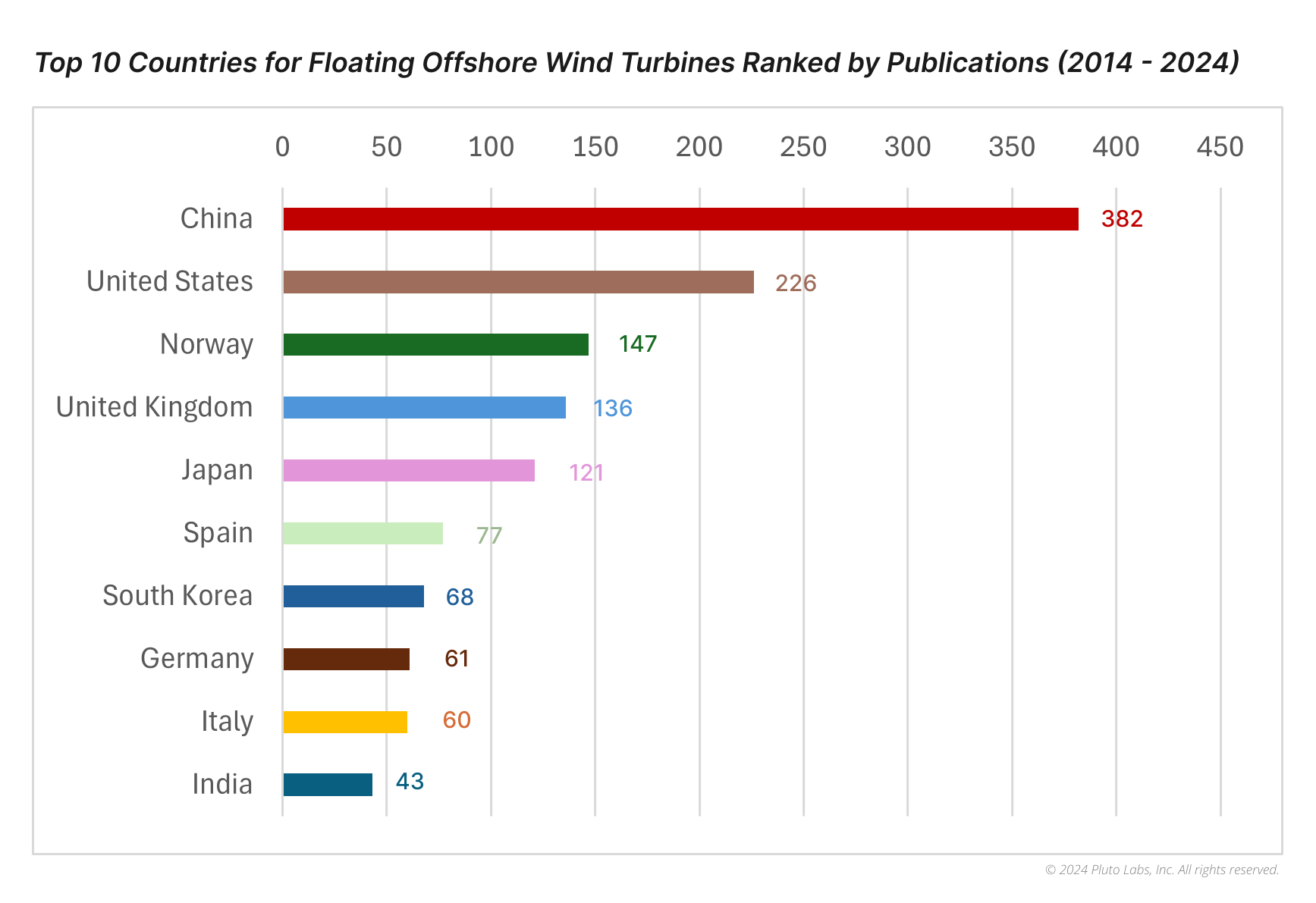
Over the past decade, the top five countries with the most active research on Floating Offshore Wind Turbines (FOWT) are China, the United States, Norway, the United Kingdom, and Japan. has shown remarkable quantitative achievements, leading with 382 studies. The United States follows in 2nd place with 226 studies, Norway in 3rd with 147, and the United Kingdom with 136, ranking 4th.
China's research output has been rapidly growing since 2018, and this trend is expected to continue beyond 2025, influenced by initiatives like China’s 14th Energy Five-Year Plan (S&P Global).
Rounding out the top 10, Spain (77 studies), South Korea (68), Germany (61), Italy (60), and India (43) hold positions 6th through 10th.
Focused Research on FOWT by Country (Last 3 Years)
Here’s a look at the countries that have focused most intensely on research for the top five fields of Floating Offshore Wind Turbines over the past 3 years:
- Barge
- Semisubmersible
- Spar
- TLP (Tension Leg Platform)
- Multi-Turbine Platforms (Hybrid platform)

Based on the total number of publications, Spar technology leads the FOWT field with 151 studies, followed by Multi-Turbine Platforms with 140 studies, and TLP (Tension Leg Platform) with only 36 studies, according to data from seven key countries.
China has the most research outputs in Spar with 51 publications, and 46 publications in multi-turbine platforms. The United States, China, Norway, and the United Kingdom have demonstrated the highest research performance in the past three years, while Japan, South Korea, Spain, and Germany are also conducting active research across different FOWT fields.
It is noteworthy that the United States, which ranks first in research output, and Norway, known for building the world’s first and largest floating wind turbine, have relatively fewer studies focused on Barge structures.
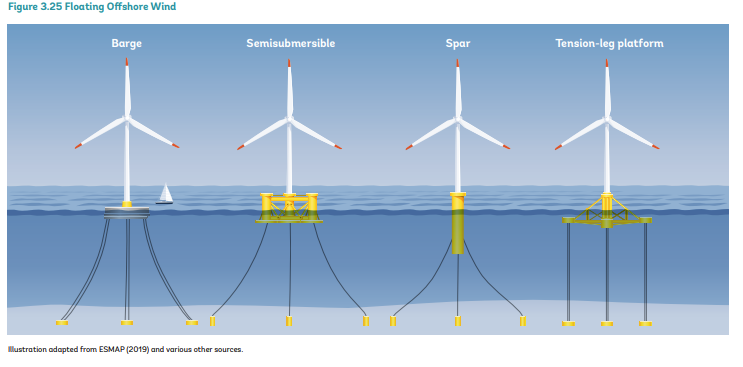
Note - The data for 2024 is partially updated, and none of the data guarantees the accuracy of the information included in this work.
Top Authors’ Normalized h-index Scatter Plot

The normalized h-index is metric designed to provide a fairer evaluation of a researcher’s academic impact by addressing some limitations of the traditional h-index. Unlike the h-index, which is based solely on the number of publications and citations, the normalized h-index considers additional variables, such as research field, career stage, and publication years, allowing for a more equitable comparison among researchers from different backgrounds
On Scinapse,

you can view the normalized h-index calculated using this specific formula👆🏻
For additional analytics related to the traditional h-index, and other author metrics here.

Within Scinapse, Top Authors can be sorted according to Publications, Citations, and h-index based on customized criteria set within Research Intelligence.
Interestingly, in this case, a single author emerged as a top performer across all three metrics, demonstrating high quantitative and qualitative achievements. This was Torgeir Moan from the Norwegian University of Science and Technology, with 25 publications and 650 citations, showing strong results in both the volume and impact of his work.
Based on the filtered set, he also achieved a high h-index of 13 (with this theme of filtered set).
📍For more details, visit Torgeir Moan's profile on Scinapse.
How Can I Extract Research Insights From Scinapse?
Scinapse's Research Intelligence Advanced Filter allows users to add and edit various filters according to their research objectives. This enables not only searching for the right paper but also gaining insights into advanced research trends.
To add a Field Trend,
enter each relevant “Keyword” into the filter (remember to use quotation marks around each keyword).
For any additional keywords you wish to search, input them into the extra filter to narrow down the results.
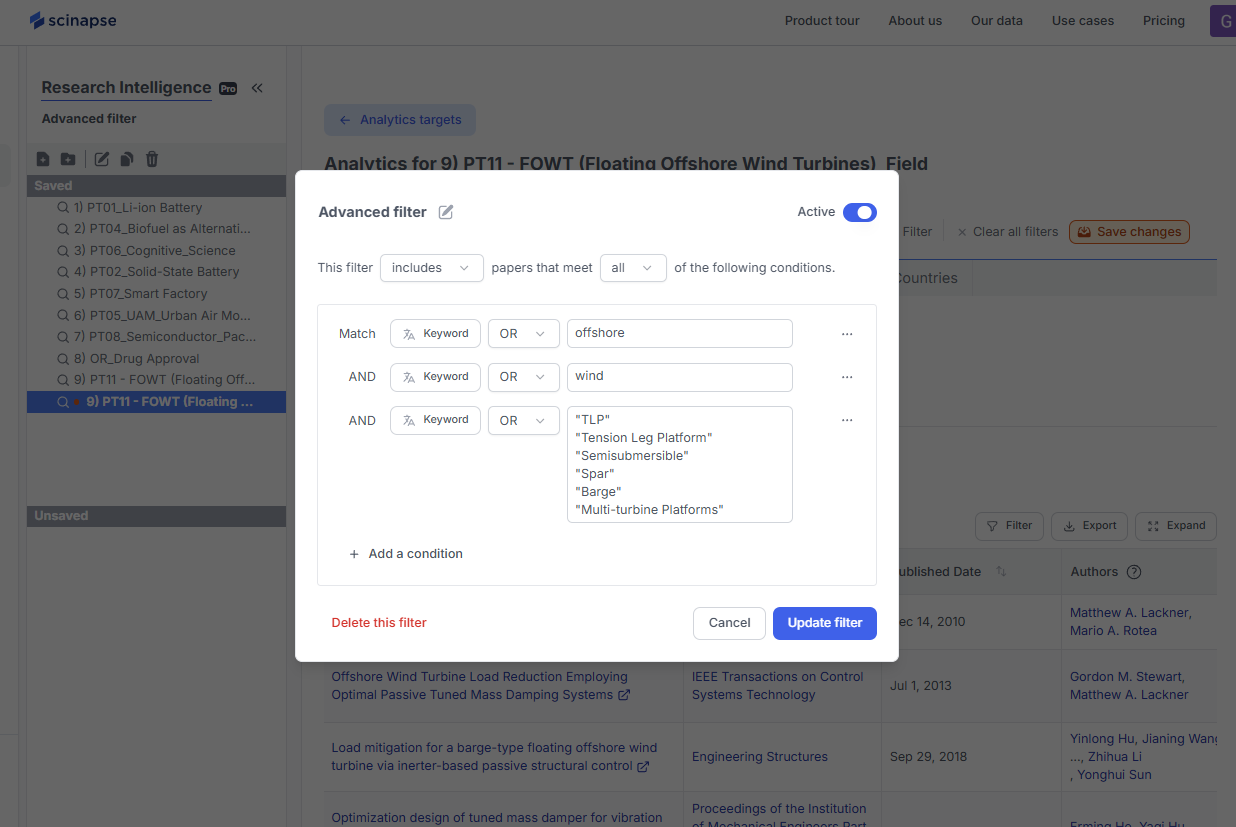
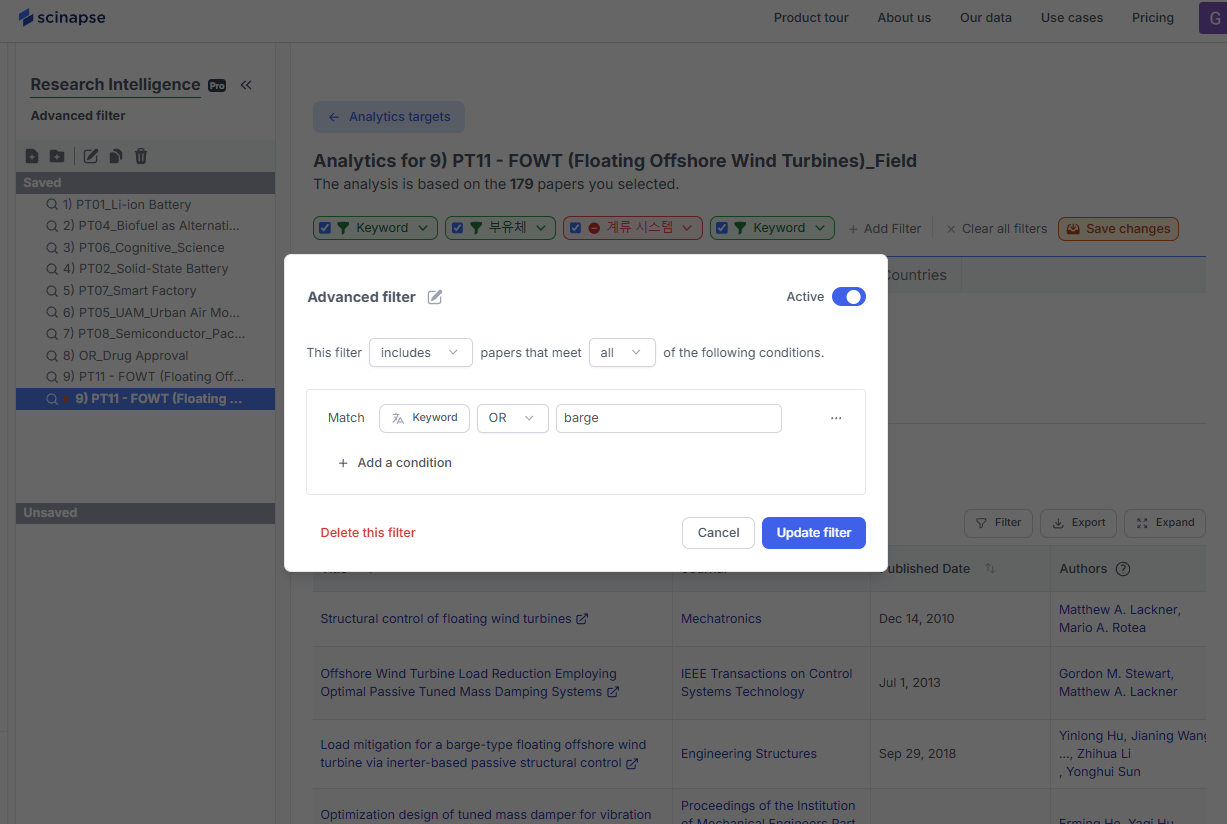
And sort from Top Countries [Last 3 Years].
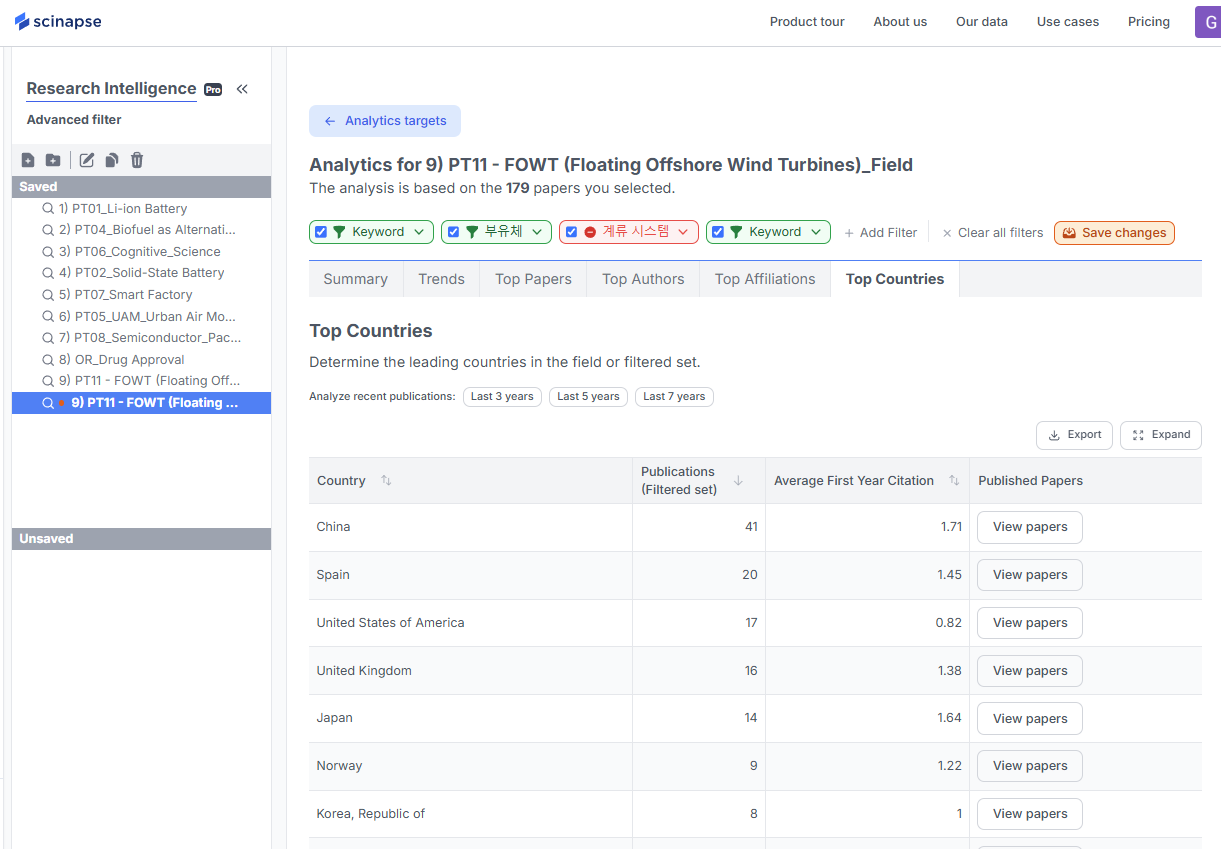
How Has FOWT Evolved Over the Past Years?
To summarize the study, what kind of actual research content has changed and developed over the last 3, 5, and 7 years?
In recent years, research on floating wind and wave energy converters has focused on improving power output and structural response.
Over the 7 seven years, work has addressed global load validation, load mitigation, hybrid system design, aero-hydro-servo-elastic coupling, and vibration control in floating offshore wind systems.
5 year research trends have highlighted dynamic interactions and performance optimization, including second-order hydrodynamic effects. And finally, over the last 3 years, efforts have centered on understanding dynamic response, failure scenarios, load effects, and platform design for offshore wind turbines.
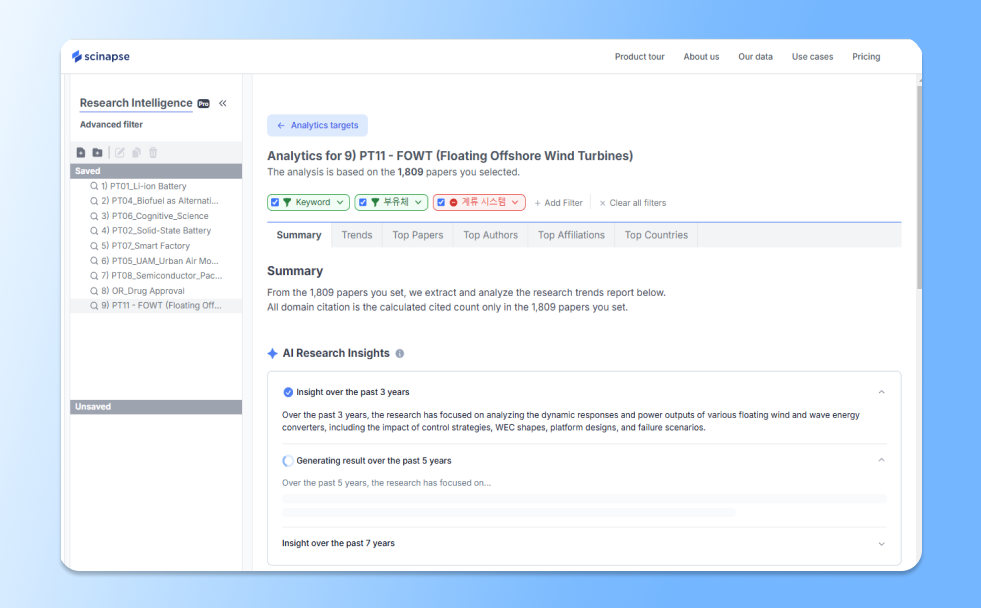
The “AI Research Insights✨” shows how research has been conducted and progressed within your search criteria over the last 3, 5, or 7 years.
👉🏻If you need more information from Research Intelligence, Try it Now!
👇🏻Need more insights? Book a demo today!
/ Data source - Scinapse
Topic advised by RI Team from [PT11] Semiconductor Packaging Research Trends
/ Written by Geehee Nahm
- Content Strategist specializing in SaaS industries
For Previous Scinapse Trends 🔽


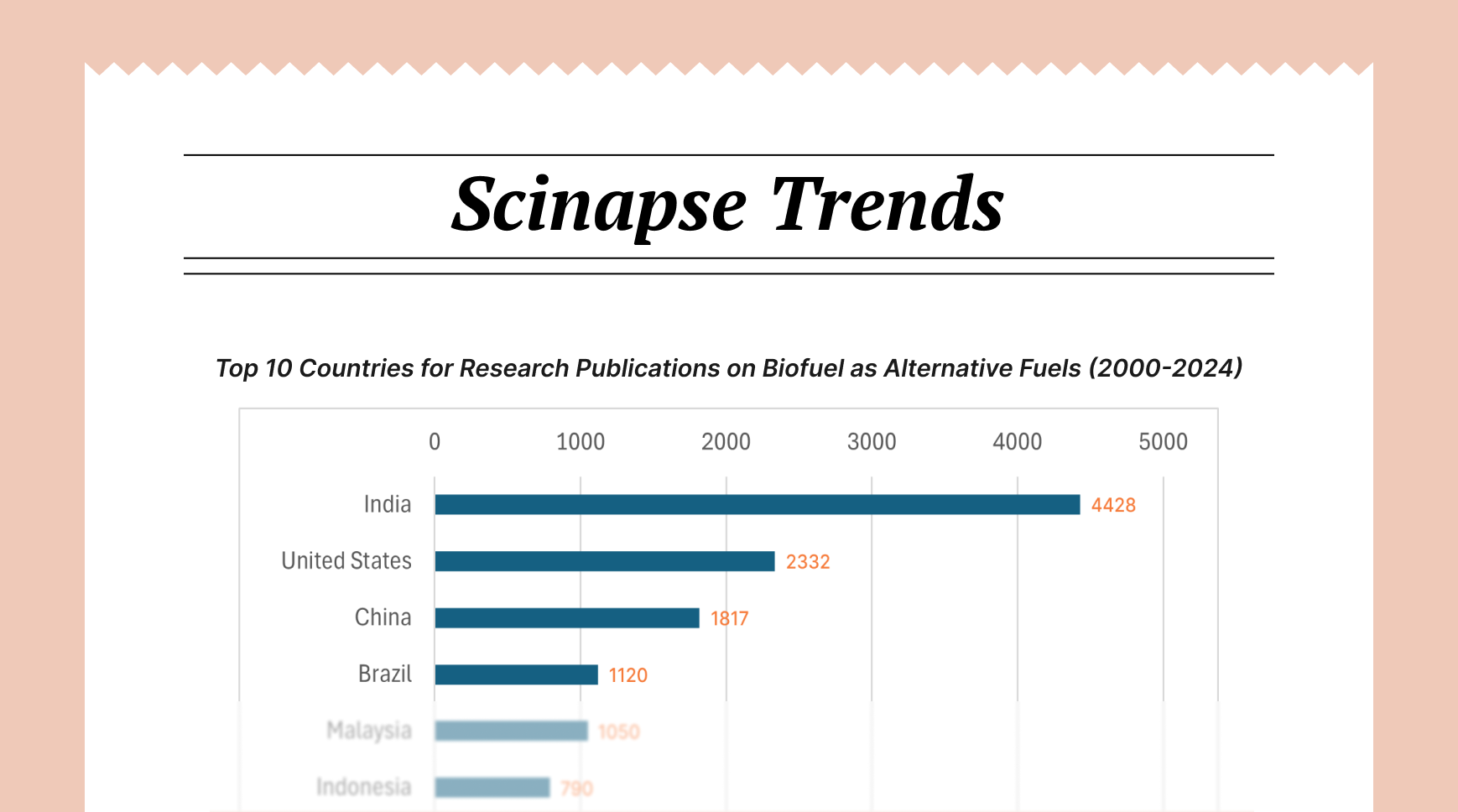

![[Global Research Trends] 8. Leading Companies and Countries with Top Publications on Drug Approval Post-Covid (2021-2024)](/content/images/size/w720/2024/10/hand-medical-glove-holding-vaccine-vial-1.jpg)
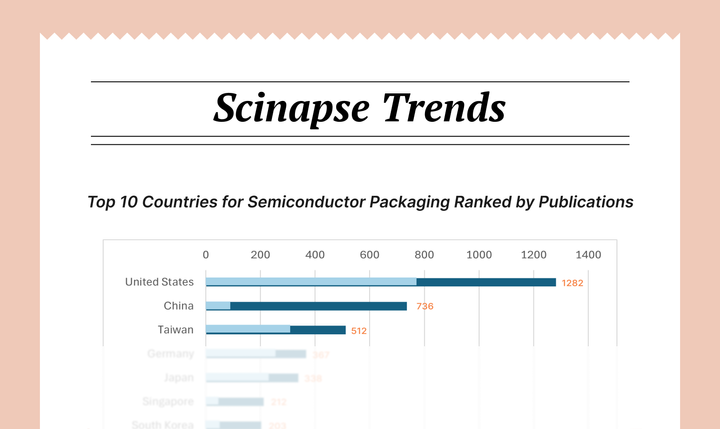
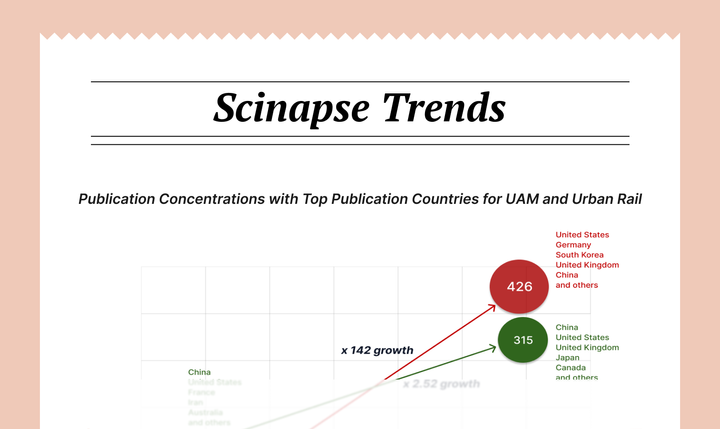
Comments ()